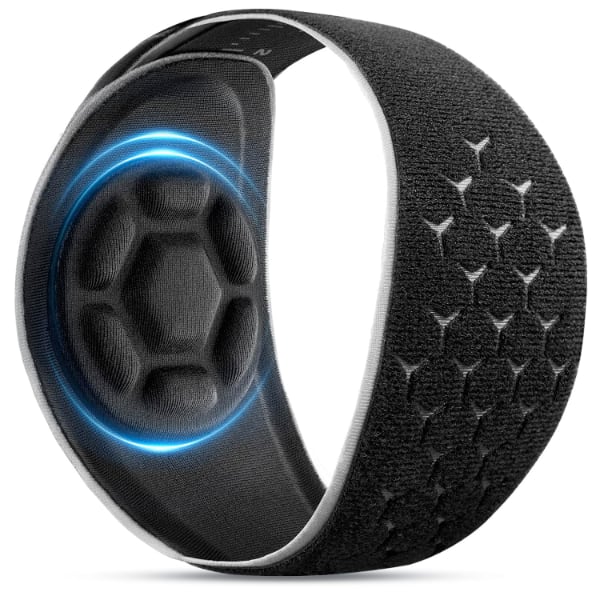In order to understand this condition it is important to understand the anatomy and function of the elbow. Please read Elbow Pain Info’s section on basic elbow anatomy. For additional background information on the biomechanics of the elbow please read Elbow Pain Info’s section on basic elbow biomechanics. Golfer’s elbow is closely related to tennis elbow.
What structures make up the elbow joint?
The elbow is made up of three bones, which are connected by muscles, ligaments and tendons. The humerus is the large upper arm bone. The ulna and radius are the two bones in the forearm. Looking at the forearm with the palm of the fingers facing up, the ulna is located on the inner (medial) aspect of the forearm. The radius is located on the outer (lateral) aspect of the forearm. Projecting from the end of the humerus are the medial and lateral epicondyles. The epicondyles are the boney attachment sites for many of the forearm muscles.
The muscles that move the fingers and the wrist originate at the elbow. These muscles attach via tendons to the medial and lateral epicondyles. Again, looking at the forearm with the palm of the fingers facing up, the forearm muscles that start on the medial epicondyle help to flex (move upwards, towards the face) the wrist and fingers. The forearm muscles that start on the lateral epicondyle help to extend (move downwards, away from the face) the wrist and fingers.
What is “Golfer’s elbow”?
“Golfers elbow” (a.k.a. medial epicondylitis) is the term used to describe irritation (inflammation) of the tendons that connect the muscles that flex the wrist and fingers to the medial epicondyle of the elbow. A common site for golfers elbow to occur is right at the attachment site of the tendons to the medial epicondyle. Although this site is the most common, inflammation can occur anywhere along the tendons.
What does golfer’s elbow feel like?
Golfers elbow usually begins with a gradual onset of dull, intermittent in the inner part of the elbow. It may progress and develop into a sharp continuous pain. Repetitive use of the elbow or arm can increase the pain. Tenderness is often present over the medial epicondyle of the elbow.
What causes golfer’s elbow?
Golfers elbow usually develops as a result of overuse. Repetitive use of the elbow and arm can cause undue stress on the tendons that flex the wrist and fingers. This in turn leads to the development of microscopic tears in the tendons that flex the wrist and fingers resulting in inflammation and pain. Training errors, weakness of the forearm muscles, poor equipment or inadequate off-season training are some of the other factors that can cause golfers elbow. Finally, golfers elbow can develop as a result of direct trauma or after an elbow injury such as a fracture.
Can golfer’s elbow be detected on X-rays?
Inflammation of the tendons that flex the wrist and fingers cannot be seen on x-ray. Therefore, although x-rays are often done to rule out bony injuries in individuals with golfers elbow these x-rays are usually normal. Other diagnostic tests, such as bone scans, blood work or MRI’s, are not usually required in typical cases of golfers elbow.
What is the treatment for golfer’s elbow?
The treatment of golfers elbow should be individualized. Treatment may include relative rest and icing to decrease pain around the medial epicondyle, stretching and strengthening exercises, anti-inflammatory medications or a golfers elbow strap. A cortisone injection may be required to reduce inflammation and pain. The above measures are usually successful and surgery is rarely required.
What other information is available on golfers‘ elbow?
Elbow Pain Info’s links section has additional information on this topic. Links have been provided to other websites as well as online medical journals. Visit Joint Pain Info for information on other joint injuries and problems.
A recommended Tennis Elbow Brace:

FREETOO Elbow Brace for Tendonitis and Golfer’s Elbow Relief
- Reduce Fatigue & Pain: The soft pad ensures pressure is only applied to the problem area while very little pressure is applied around the rest of the forearm. It will help yourself get through the pain while you are into tennis, golf, garden, baseball, pickleball, climb, hiking, fishing, pool or billiard, badminton, rowing or any sports alike.
- Skin-friendly & Soft Fabric: Comfortable and soft edges making it user friendly. Adjust both sides and straps are well made and you don’t feel it.
- Adjustability, Easy to Use: Having the hook & loop adjustment straps on both ends aids in an easy-to-adjust system for differing size forearms. Also, the velcro hook-n-loop overlaps on both straps for a custom fit.
- Help Stabilize Arm: You can continue to be active and pursue the activity that’s causing the tendonitis while with the brace on, no more elbow pain.
